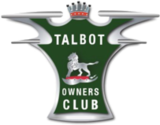Newby Foundries Group Visit, November 20 20th Nov 2019
Once again Richard Newby hosted a visit by TOC members. It was well attended by fifteen Members. I was asked to provide a write-up of the visit, but the article by David Roxburgh in the Jan/Feb 2017 Magazine already gives an excellent overview that remains accurate and essential reading. Rather than repeating all the information, I will merely echo the warm welcome that Richard and his senior staff gave us and highlight some of the cutting-edge technologies used.
What became evident was the continuing investment in new state-of-the-art facilities and technology clearly aimed at supporting the objectives of a right-first-time, improved quality and efficiency ethos that drives this business. Examples of this included a new coordinate measuring facility, a hand-held scanner for capturing 3D geometry as a digital file and a 3D printer for directly producing sand moulds and cores. The printer bed area is about 1m square. A thin layer (2 grains of fine sand thick) is applied to the bed and then the print head deposits a resin over those areas that are to be the mould (or core as appropriate) and the untreated sand is recycled. Highly complex shapes can be produced as shown in the photos.
.jpg)
.jpg)
Nowhere was this investment so evident as in the employment of world-leading Magmasoft process modelling software. This is a suite of integrated modules covering the casting design, mould filling, temperature distribution, solidification, microstructure control, and residual stress. It is complemented at the front end of the process by new scanning technology that can be used for reverse engineering to capture the complete geometry of a component. This could be fed into the Magmasoft process modelling software and also used as the input for the mould/core 3-D printer. Further, it can be used to scan the product of finished casting overlaid on the customer’s CAD file of the component and so highlight any errors in the fit between product and design.
A new co-ordinate measuring facility provides for dimensional inspection to proof the casting dimensions to customers’ specification. It is also used to measure 32 examples of a cast component and the information used to provide statistical data on the process capability for that casting. Clearly this can be integrated into the process modelling capability to demonstrate the level of match between process capability and design intent. This leads directly to increased customer satisfaction, shorter lead times, consistent quality and reduced costs.
Everywhere there were examples of carefully thought out ideas for improving the end product.

One of the problems found with the standard method of pouring is the tendency for the inflow of metal to push apart the two parts of the mould, hence the use of weights on the top of the mould to prevent this and increase accuracy of the final part.
In the shell mould system, the shell is supported by filling the area around the shells with dry sand and, at the casting stage, vacuum is applied from the bottom that maximises the dry sand packing, providing increased support and changes to the rate of cooling. Because the density of packing varies vertically, being highest at the bottom, this variation changes the thermal conductivity. Their computer modelling recognises this and takes it into account, providing increased accuracy of the process modelling.
We saw the employment of ceramic foam filters to prevent dross and slag from entering the casting and also helping to control the nature of the flow of the metal. This was particularly pleasing to the writer as he was the originator of this technology some 40 years ago when working in the aerospace industry!
Overall the impression was of a dynamic foundry employing latest technology with a mix of automation and hands-on, all aimed at improving quality and reducing operating costs, with a clear understanding of where their market is in order to maximise the bottom line.
THE TALBOT OWNERS CLUB MAGAZINE
The Talbot Owners Club magazine is published bi-monthly and contains news, updates and informative articles. It is edited by club secretary David Roxburgh.
GO TO DOWNLOADS
TALBOT OWNERS CLUB MEMBERSHIP
The essence of the Club is to ensure that members meet and enjoy themselves; the Club is open and democratic, dialogie is encouraged. It is for people of all ages who like Talbot cars and want to enjoy the company of like-minded people and also to support current Talbot involvement in historic competition.
